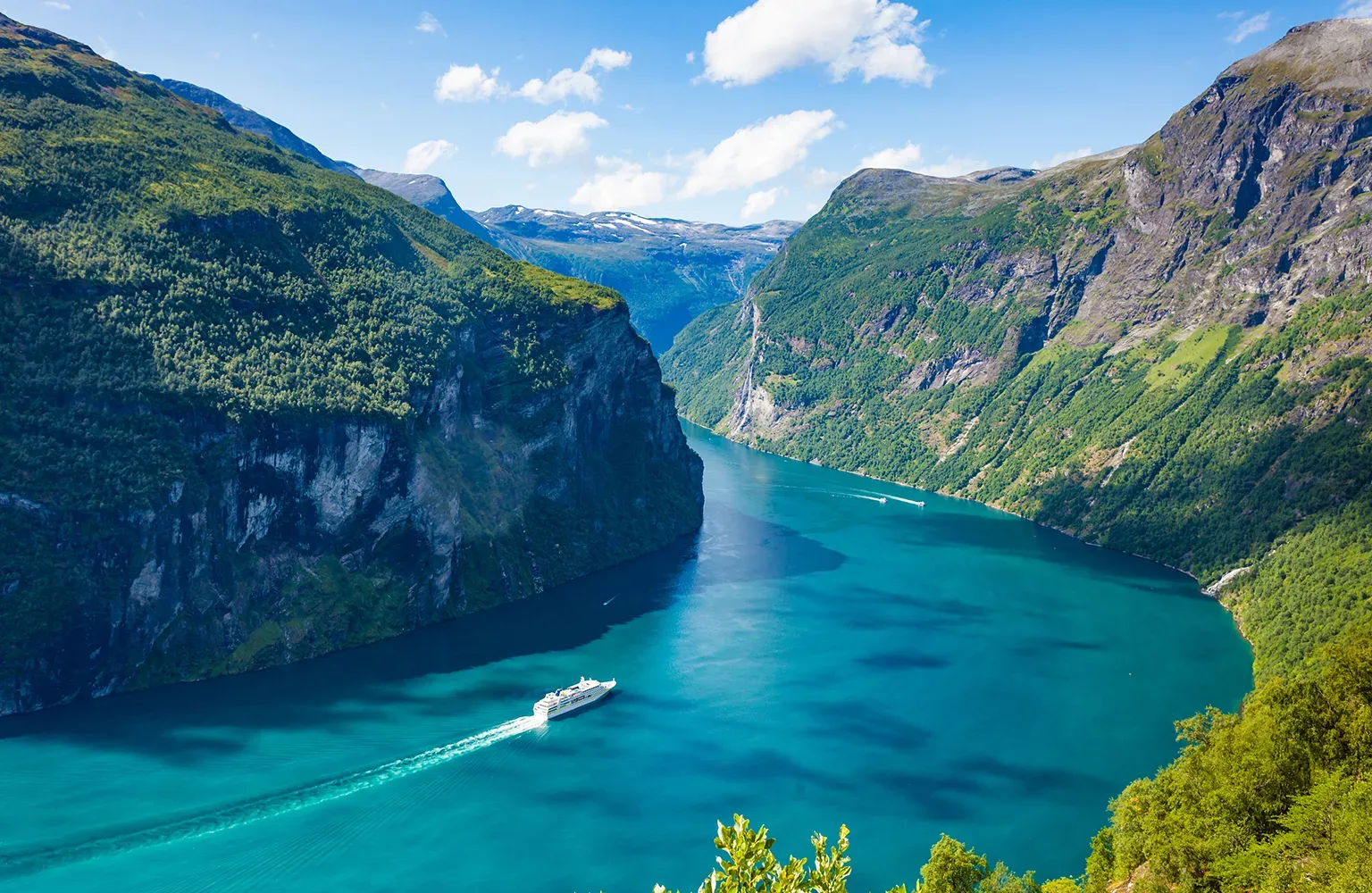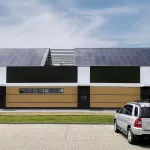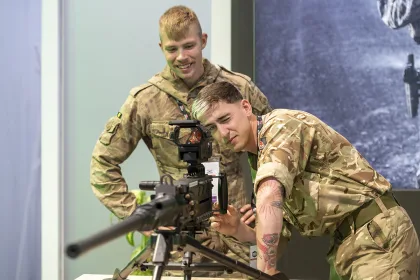Norway’s fjords have taken a bruising from excessive cruising, prompting the government to take action by prohibiting fuel-powered ships. We explore its impact on the country’s environment and local communities.
BREAKING THE ARCTIC ICE
Nestled on the stunning Scandinavian Peninsula, Norway stands out as one of the world’s most prosperous nations, thanks to its vast wealth of resources – most notably its abundant offshore oil reserves. Alongside economic stability, the country is also renowned for its firm environmental commitments.
Celebrated for its mesmerising Aurora Borealis, long polar nights, and captivating tales of trolls, Norway possesses a landscape that can only be described as nature’s masterpiece, featuring soaring white-capped mountains and verdant emerald forests.
The majestic fjords, one of the country’s most beloved landscapes, dates back to the Earth’s last ice age when glaciers carved out valleys that were subsequently flooded by seawater, creating breathtaking natural wonders.
Once home to the seafaring Vikings, the area is now crowded with tourists every season, mostly arriving by cruise ship to witness the dramatic spectacle of the enchanting fjords against the backdrop of the ethereal midnight sun in the summer season.
In winter, the Norwegian fjords are an incredible sight, and the increased opportunity to experience the magical Northern Lights dancing across the sky regularly ushers in even more tourists.
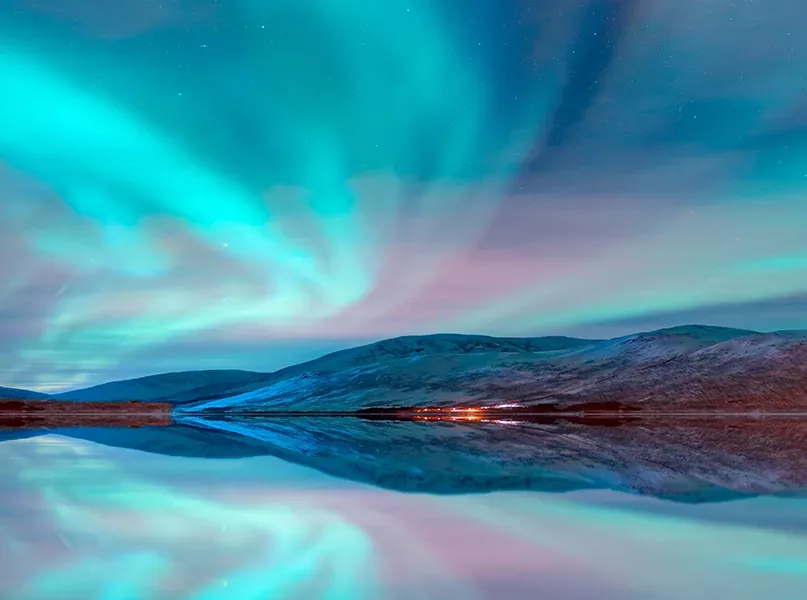
CONSEQUENCES FOR COMMUNITIES
Fortunately, the awe-inspiring Norwegian landscape and its pristine waters are being safeguarded by the government’s commitment to reducing cruise ship emissions.
Initially set for 2026, the ban on non-zero emission passenger vessels has been extended to 2032, ensuring the preservation of this iconic natural environment for future generations.
Additionally, cruise ships cause an influx of visitors on small fjord communities, such as Geiranger and Flåm, sparking debates and raising awareness of consequential issues. This led Bergen to stop tourist buses entering its historic city centre due to the number of people disembarking from large ships.
Furthermore, the resilient communities of the Indigenous Sámi people, whose generations of reindeer herders live in harmony with nature and the seasons, are being threatened by both a large amount of visitors and the effects of climate change.
In Northern Norway, meanwhile, the Lofoten Islands have been voted one of the planet’s most appealing destinations by National Geographic. Located just above the Arctic Circle, it is a popular route for cruise ships.
However, vessels travelling through the archipelago break the ice and accelerate melting, resulting in their emissions settling on the ice and increased traffic that further disrupts local ecosystems. While climate change is the main contributor, the presence of cruise ships in the Arctic causes significant environmental damage.
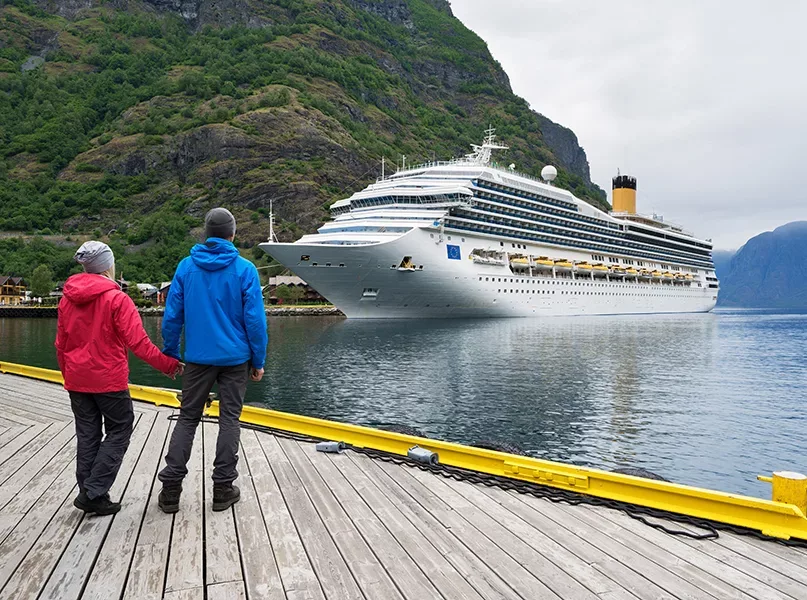
ENVIRONMENT VERSUS ECONOMY
Norway boasts the world’s second-longest coastline and its fjords are the country’s top tourist attraction, with the popular route of The West Norwegian Fjords becoming a UNESCO World Heritage Site in 2005. However, long-standing conflict between the economy and the environment has resurfaced.
The scenic vistas are not only a treat for tourists, but also delicate and vital ecosystems for marine life, providing a home for fish, seabirds, whales, and seals. Unfortunately, these habitats are at risk of destruction due to the cruise industry, which contributes three percent of the country’s greenhouse gas emissions.
In order to make sustainability profitable, it is essential to adapt rather than completely stop activities. It is worth noting that many large passenger vessels utilise heavy-fuel oils, which release sulphur oxides (SOx) and nitrogen oxides (NOx) into the atmosphere. Consequently, cruise ship operators have begun to make concessions for these emissions.
Another critical issue is the discharge of waste, including sewage, foodstuffs, and ballast water, which introduces harmful substances and invasive species into the fjords. Additionally, the noise generated by cruise ships also disrupts sea mammals, which rely on unbroken sound for communication and navigation.
To tackle these issues, Norwegian authorities are implementing some of the world’s strictest environmental standards for cruise ships, especially those sailing through the areas of the fjords that are designated UNESCO World Heritage Sites.

RESTRICTIONS NOT EVICTIONS
In a bid to reduce the tourism industry’s carbon footprint, new regulations state that only cruise ships powered by cleaner technologies, such as electric or hydro propulsion, are permitted to access environmentally sensitive areas. Moreover, restrictions are imposed on the dimensions and quantity of cruise ships allowed in specific fjords.
Delaying the measures by six years will allow for the development of new vessels for the affected cruise companies. However, the ruling will still apply to tourist ships and ferries under 10,000 tonnes from 1st January 2026.
For instance, Hurtigruten, the original Norwegian cruise operator established in 1893, is widely recognised for its innovative approach towards the use of alternative fuel for its fleet. The leading adventure travel company has been championing a greener future in tourism for some time and significantly invested in cutting-edge technologies such as liquefied natural gas (LNG) and shore power connections.
Another prominent example is Ambassador Cruise Line, whose MS Ambience and MS Ambition ships are already showcasing its commitment to eco-friendly travel with advanced emission control systems that meet Norway’s NOx requirements.
The company’s smaller, more efficient vessels prioritise sustainability and environmental stewardship, making them ideal for navigating the fjords and significantly reducing harmful air pollutants compared to traditional cruise ships, positioning Ambassador Cruise Line as a pioneer amongst other companies permitted to sail through the area.
Princess Cruises, Scenic, Fred. Olsen Cruises, and Cunard, alongside P&O Cruises, Havila Voyages, and Atlas Ocean Voyages, also lead the way in reducing their environmental impact on Norwegian waters.
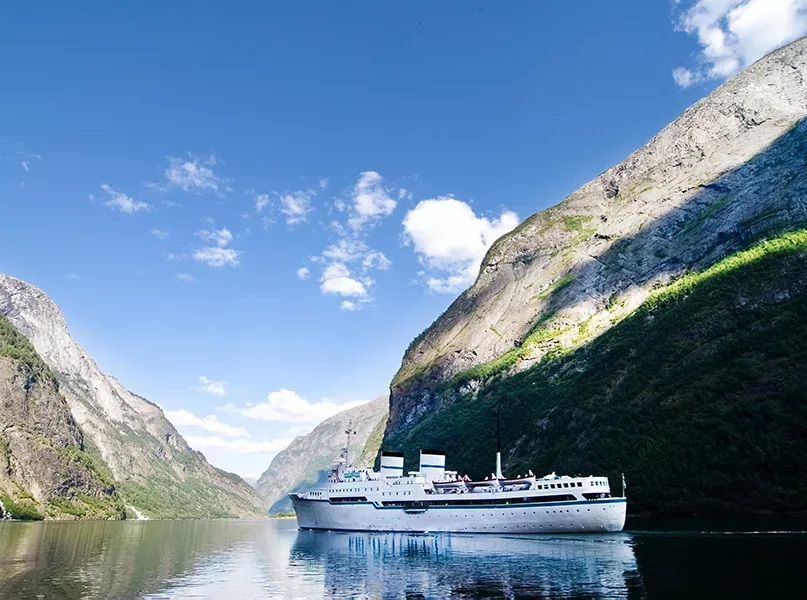
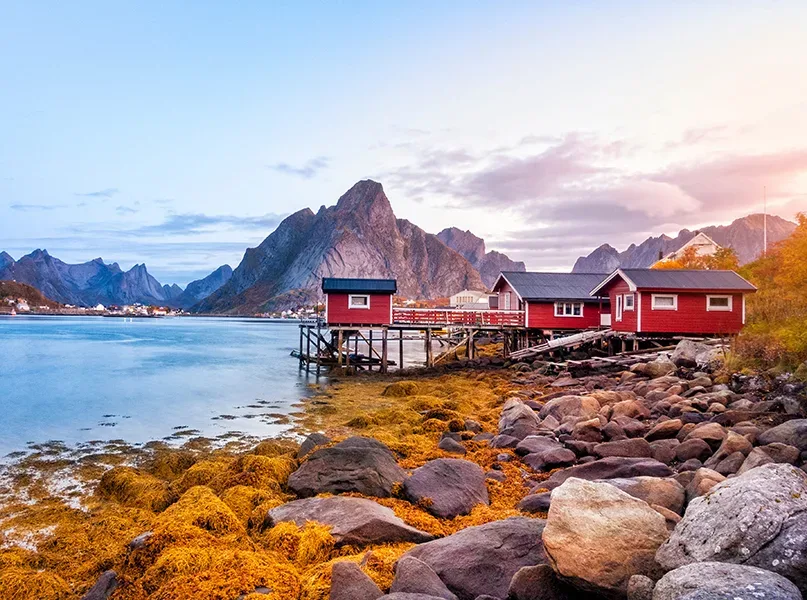
THE FUTURE OF FJORD TOURS
The focus on sustainability ensures that the cruise and tourism industries are constantly evolving. Although a complete ban is proposed for 2032, the transition to alternative energy for travelling around the fjords will begin before this date.
This shift allows tourists to experience Norway’s natural wonders while preserving its landscapes and minimising degradation.
In addition to reshaping the industry by pushing cruise lines to adopt greener technologies, the country is spearheading the future of cruising, thereby influencing other nations to follow suit.
Norway is making good progress in its efforts to build a sustainable destination. Not only has the government introduced a requirement for cruise ships to be zero emission, but the tourism authority has also worked with industry representatives to address the issue of mass tourism, which Instagrammers have exacerbated in recent years.
Setting out a sustainable framework for the next decade of tourism development, Visit Norway and various representatives created the tagline – “Big Impact, Small Footprint” – which will hopefully serve as a guiding principle for other global initiatives.



